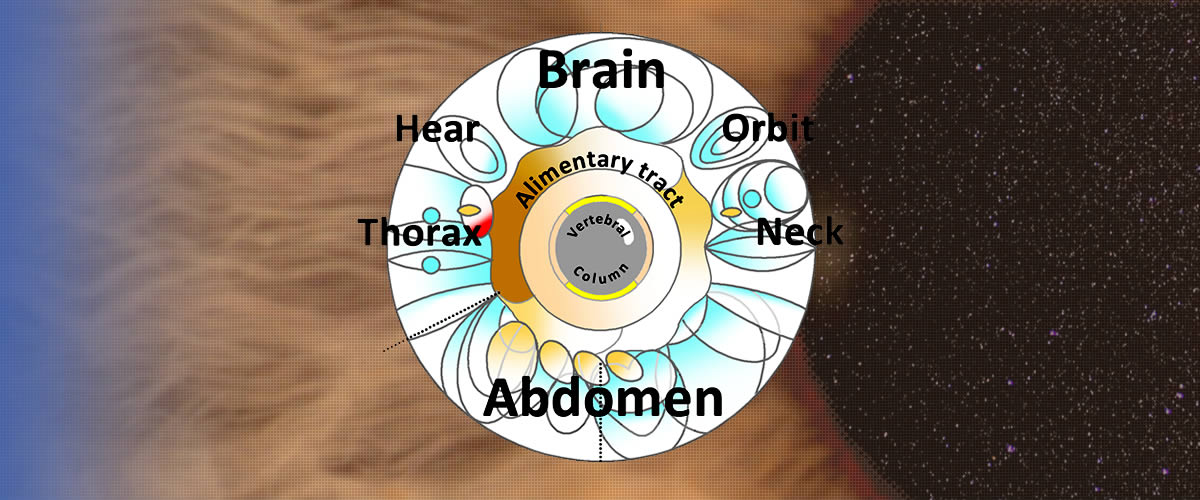 The connections between internal organs and body surface are utilized in Iridology as well as in Traditional Chinese Acupuncture, Reflexology and Kinesiology.
The connections between internal organs and body surface are utilized in Iridology as well as in Traditional Chinese Acupuncture, Reflexology and Kinesiology.
The founder of modern Iridology (I.V. Peczely) published the first map of the iris in 1880. Since then, many different iris maps have been published. The maps elaborated by MD F. Puerari are a compendium of the most widely shared knowledges.
The iris subdivision in concentric circles (circular map) or in radial sectors (sectorial map), simplifies iris analysis and allows for a correct localization of the points of interest.
Circular map. The circular subdivision divides the iris into six concentric circles which coincide with as many areas and functions of the human body.
Sectorial map. The eight sectors of the sectorial subdivision coincide with the major apparatuses.
The main problem with iridological maps is the available space. Unlike acupuncture points, which are distributed all over the body and organized along well separated meridians, the projections of organs in the irises are concentrated in a very limited space. In addition, their graphic representation is one-dimensional while the organs are tri-dimensional and close to each other. As a consequence, different organs necessarily share the same projection areas. Peczely, the founder of modern iridology, solved this problem by grouping the organs together in sectors rather than in points.
Peczely’s method can be developed by focusing on the principles of overlapping and grouping.
Overlapping. Two examples. Abdomen organs like the rectum, uterus and kidneys are anatomically close one another and must be represented in the iris in adjacent, overlapping areas. This is also the case for organs which are located inside the thorax (lungs, heart and aorta).
Grouping. Organs projections in the iris can be divided into eight general categories (Brain, Neck, Thorax, Digestive tract, Abdomen, Orbit, Ear, Vertebral column) according to their location: 1) organs located in the cranium (Brain): upper sector of the irises. 2) organs located in the neck (Neck): iris sector closer to the nose 3) organs located in the thorax (Thorax): iris sector towards the ears. 4) stomach and intestine (Digestive tract): circular ring around the pupil. 5) Abdominal organs (abdomen): lower sector of the irises. 6) ocular area (Orbit): border sector between Brain and Neck. 7) auricular area (Ear): border sector between Brain and Thorax. (8) Vertebral column: pupillary border. Read more


